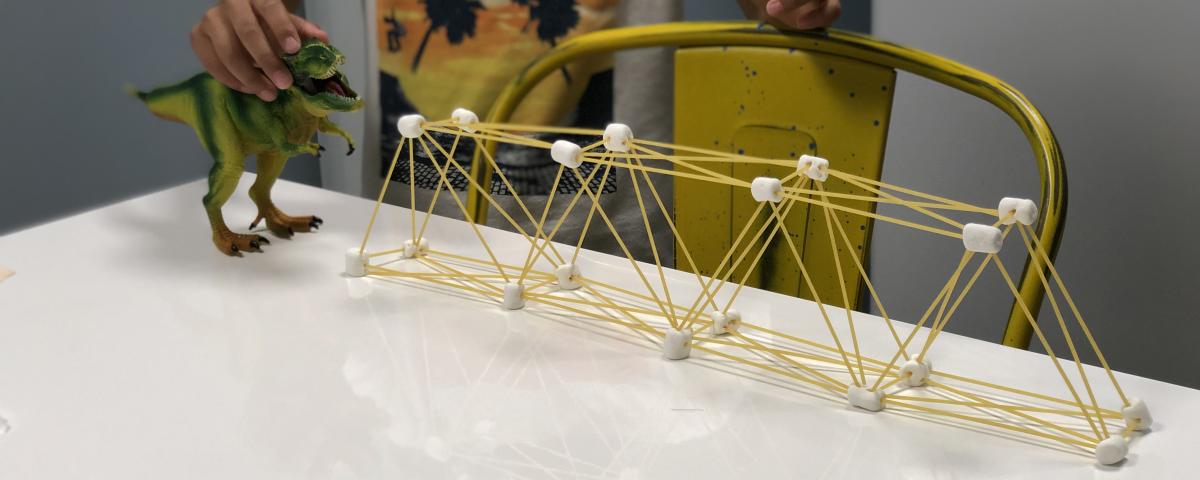
Backyard Science
Learning isn't something that only happens in school. I talked a lot about failure in one of my past blogs, but along with failure is learning. Striving to learn helps you grow as a person. When someone is usually talking about learning, their minds tend to think of school. Learning is much more than finding out what the quadratic formula is or what DNA means (Deoxyribonucleic acid. Thanks, Mr. Sankey.) That's the only science fact I remember from my three years in middle school. But learning is so much more than school.
Figuring out how to do basic house repairs (none of which I can do) is a way of learning. Instilling into your kids the thirst for knowledge is setting them up for success in life. No one will have to sit them down and teach them how to do something. They will go and figure it out themselves. And it is your job as a parent to encourage that kind of extra-curricular learning. Here are a few ideas you can do to help encourage learning outside of the classroom.
Making Homemade Bouncy Balls
Ingredients:
- 1 Tb of Borax
- ½ Cup of Warm Water
- 1 Tb of Cornstarch
- 2 Tb of White Glue Food Coloring
- 2 Plastic Cups
- 1 Plastic Bag
Instructions:
- In a cup, mix the Borax and warm water.
- In a different cup, mix the glue, cornstarch, and food coloring.
- Add the glue mixture to the water.
- The glue should begin to harden after 8-10 seconds. Use a plastic fork or spoon for fishing it out of the water.
- Start Rolling the mixture into a ball. The more you roll the ball, the harder it will get.
- When done, store the ball in a plastic bag, so it does not dry out.
Making bouncy balls is just a fun experiment that lets the kids get their hands dirty, but not make too big of a mess. If you lay a trash bag on the workspace, then all you have to do is gather it all up and throw out whatever is plastic and wash off whatever isn’t. And now your kid knows how to make bouncy balls. They can brag to all of their friends about their new collection.
Building a Marshmallow Spaghetti Bridge

Building a spaghetti bridge is a fun and time-consuming activity that helps teach kids to critically think while also planning ahead for any mishaps that may occur. Also, there is something unique about making something that isn’t a necklace out of pasta. Plus, it’s inexpensive with minimal mess.
Ingredients:
- 1 Box of Pasta (Spaghetti or anything like it)
- 1 Bag of Marshmallows (I prefer the mini marshmallows)
- 1 Marker
Instructions:
- Sit down with your kids at a computer and look up some pictures of simple bridge layouts, something that shows the basic shapes of bridges. Find one that they want to build.
- Once you decide on a design, it’s time to start measuring how many pieces of spaghetti you are going to need and measuring them out.
- I always like to start with the base of the bridge and build on it. Use the spaghetti as your beams for building the bridge, and the marshmallows as the joints to hold it all together.
- Now run wild with it. But be careful, you don’t want to have any of the spaghetti snap mid-construction.
- After the construction is all done, test it. See how much weight your bridge can hold. I recommend using pennies as your weights. If the bridge breaks, then ask yourself where did it break and how can we make it better?
I love this project because it teaches so much more than “bridges.” It takes careful planning, critical thinking, and a lot of patience to build. And when it’s all said and done, you will have made something with your kid that they will be proud to show off.
Making a Story Book
Kids love to tell stories, but if we are honest with ourselves, they aren’t always great at telling them. So help them write a story. Learning to layout and organize your thoughts into a cohesive and articulate idea is a skill way too few have nowadays.
Things you need:
- Paper
- Stuff to color with (crayons, markers, colored pencils)
- 3-hole punch
- 1 Binder or folder
Instructions:
- Ask your kids if they want to write fiction or nonfiction and help brainstorm all the different ideas they could write
- Help them outline their ideas into an order that makes sense
- Have them write out their story (and if you are making a picture book with them, then tell them not to draw anything yet.)
- Go over their story with them and help fix plot holes in their story. Be their editor. (Editor only, do not author the story.)
- Now that they have a fully cohesive story have them draw it out.
- Put it in a binder or folder so that it is all together and can be read as a book.
Teaching isn’t just the sole responsibility of a teacher. And learning doesn’t have to be some annoying thing your kids hate. It can be a fun activity that excites and stimulates the brain. The best learning happens when you don’t realize that you are being taught something until it’s all said and done.

